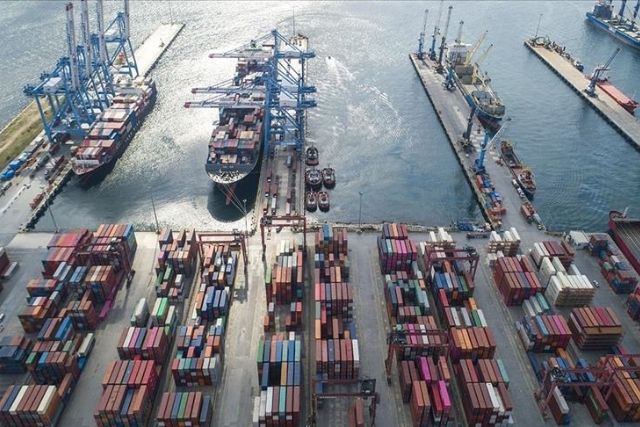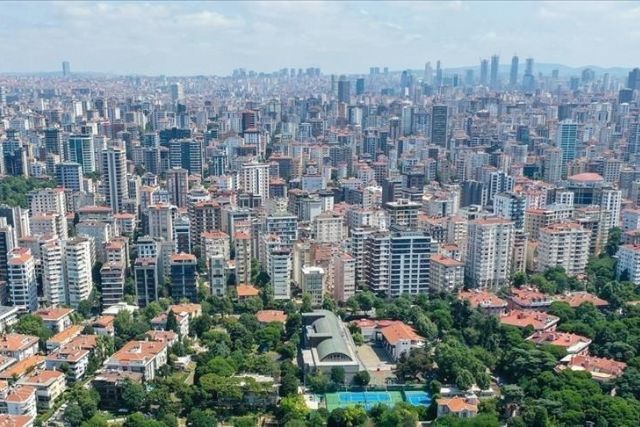Environment paying price of conflict in Kashmir
Region’s environment not spared because of decades-long conflict, experts say

SRINAGAR, Jammu and Kashmir
The decades-long conflict in Indian-administered Kashmir that has cost human life also has not spared the fragile environment of the region, experts say.
For International Day for Preventing the Exploitation of the Environment in War and Armed Conflict falling on Nov. 6, Anadolu Agency spoke with experts to understand how armed conflict is costing the environment with unbearable consequences.
"Wherever there is anthropogenic (human) activity, it is definitely going to cost the environment, particularly in eco fragile zones," Dr. Irfan Rashid, an expert on the environment and climate change, told Anadolu Agency.
As India pledges support for environmental protection at the 26th UN Climate Change Conference, also known as COP26, underway in Glasgow, Scotland, environmental concerns in its own backyard have remained unanswered, particularly in the northeastern regions.
Degradation
In the Kashmir region, the environmental degradation can be traced back to after the partition of the Indian subcontinent into India and Pakistan that heavily affected the Himalayan region, according to research scholar Jennifer Crook.
In a research paper, War in Kashmir and its effect on the environment, Crook wrote that the deployment of Indian and Pakistani armies in Kashmir in 1947 led to large-scale poaching of rare species such as ibex, blue sheep, urian the big-horned sheep, antelopes and the snow leopard.
“At first, the soldiers were killing the animals for food but when the poorly paid soldiers realised how valuable the animal furs and skins were in the international markets, they started to slaughter the Kashmiri animals with much greater zeal,” wrote Crook.
She noted that the consequence has been that some rare species like the snow leopard, flying squirrel and long-tailed Himalayan marmot have been pushed to the verge of extinction.
Environmental activist Raja Muzaffar Bhat told Anadolu Agency that the armed presence at any eco-fragile zone is devastating to the environment.
"Not only it impacts humans but it greatly dangers flora and fauna of the area while giving reference to Tosamaidan meadow which sometimes back was being used an artillery firing range by the Indian army," said Bhat.
Sixty-eight people were killed and 37 have been injured over the years due to the unexploded shells lying in the meadow, which lies in central Kashmir's Budgam district, according to Under the Right to Information Act. That includes children.
In 2017, a court ruling directed compensation to victims while it also called out for measures to tackle environmental degradation in the area.
But the Tosamaidan Bachov front, an organization working for the betterment of the area, said the government has not taken much initiative and many victims have not yet been paid compensation.
Receding natural resources
The Kashmir region is home to 120 -150 glaciers but due to human interference and tension, they are receding at a pace, experts say.
Scholar DH Eddie, in his 2002 study titled The Military Impact on the Environment, said environmental stress is a cause and effect of political tension and military conflict between India and Pakistan and they fought to assert or resist control on the natural resources of Jammu and Kashmir.
"If this conflict continues these resources become scarcer," the study said. "The more human interference around these natural resources, the more environmental problems will arise.”
Eddie added that it has led to recession in glaciers because we have allowed a lot of human interference.
Another study, Linking the recent glacier retreat and depleting streamflow patterns with land system changes in Kashmir Himalaya, India, published in the journal Water by Irfan Rashid, Ulfat Majeed, Sheikh Aneaus and Mauri Pelto assessed the changes in Kashmir's largest glacier, the Kolahoi Glacier, between 1962 and 2018, and found that the glacier is receding at a very fast pace.
"It has lost almost 23 percent of its area since 1962 and has fragmented into smaller parts," it said.
It also said the glacial snout has been melting and retreating fast and has been in an imbalanced state between 1962 and 2018 with melting rates being much higher than the accumulation rates.
"Once you emit smoke or soot on the glacial body, it quickly absorbs it making it prone to heat which automatically helps it into recession," said Rashid.
A separate study mapped 147 glaciers in the Kashmir region said they were reduced 28.82% from 1980 to 2018 and glacier loss in the region is much higher as compared to other Himalayan regions.
Growing wild/man conflict
Steadily decreasing forest cover in Kashmir, a result of legal and illegal logging operations and human encroachments into the forest, is a direct cause for increasing encounters between humans and animals, experts say.
It is complicated by the presence of a huge military buildup around those areas.
Aliya Mir, a wildlife expert said when we have eroded or denuded forest areas which is the living habitat of many animals, the cost will be innumerable.
"We are seeing an increasing number of wild/ animal conflicts and the reason is human interference. If we can stop it, we can also stop these conflicts," said Mir.
Kashmir's dense forest area has also shrunk considerably, from 37% of its total area to 11%.
Mohammad Sultan Bhat, who heads The Third Pole website of the geography department at Kashmir University, said the area under dense forests around the tourist resort of Pahalgam in southern Kashmir has fallen by 191 square kilometers (74 square miles) from 1961 to 2010 with an average annual loss of 3.9 square kilometers (1.5 square miles), largely due to illegal construction in a forested area.





